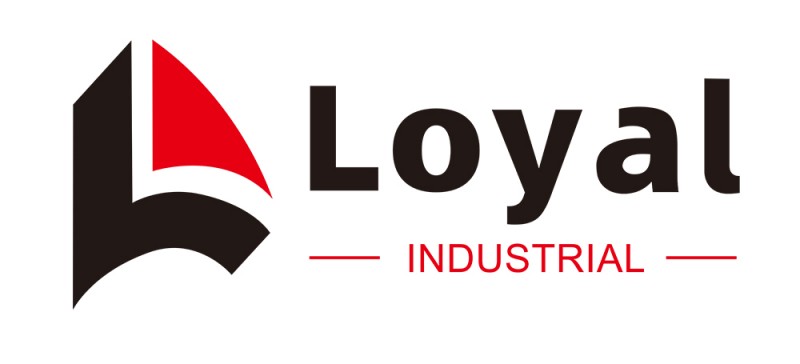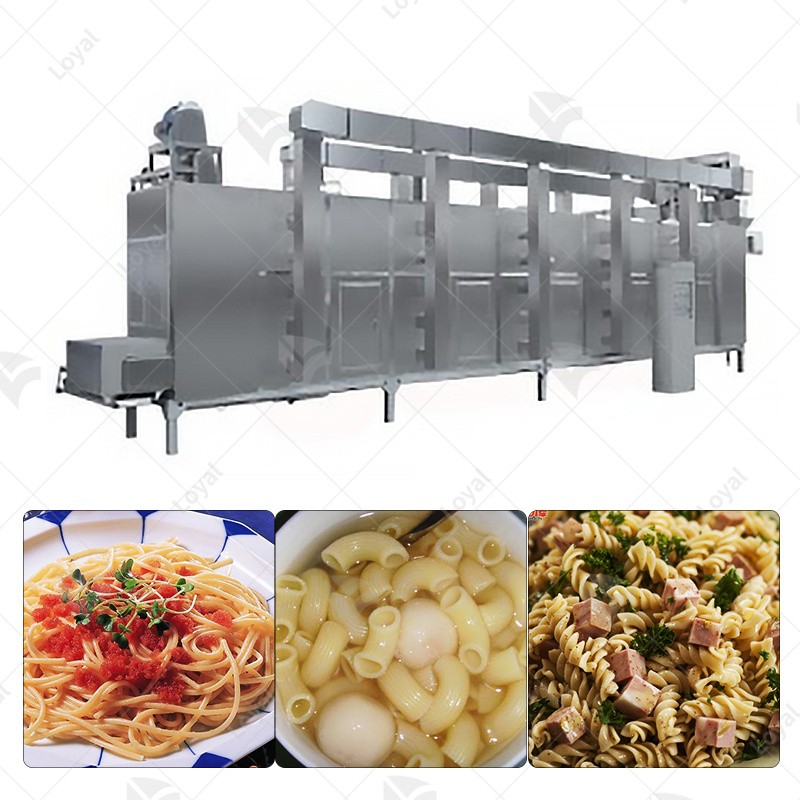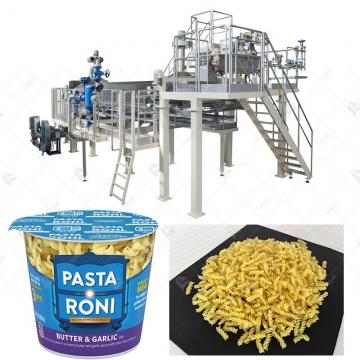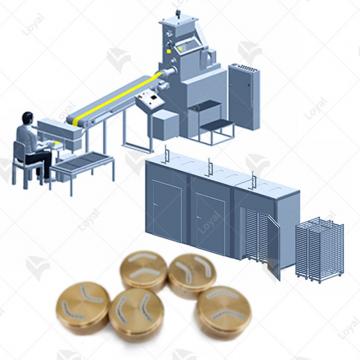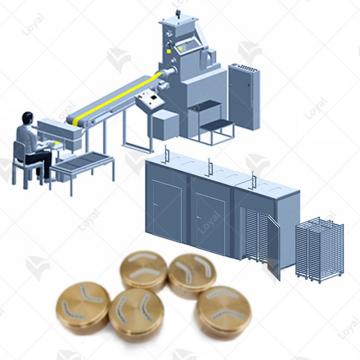Efficient Energy, Precision Craftsmanship: Macaroni Pasta Production Line with European-Origin Vacuum Extrusion
Efficient Energy, Precision Craftsmanship: Macaroni Pasta Production Line with European-Origin Vacuum Extrusion
Shandong Loyal Industrial Co., Ltd. has incorporated advanced technologies from SARP and Tecalit in the production of its macaroni.Precision in macaroni production is a paramount factor that shapes the quality and efficiency of the entire process. The Macaroni Pasta Production Line stands as a testament to the seamless integration of cutting-edge technology and European craftsmanship, ensuring the highest standards of precision. At its core, the utilization of European-Origin Vacuum Extrusion adds a layer of sophistication, setting the stage for a revolutionary approach to macaroni manufacturing.

Understanding Vacuum Extrusion in Macaroni Pasta Production
To comprehend the precision achieved by the Macaroni Pasta Production Line, it's essential to delve into the fundamentals of Vacuum Extrusion technology. This process plays a pivotal role in shaping macaroni, ensuring uniformity in texture and form. The European-Origin Vacuum Extrusion, known for its precision and reliability, becomes a cornerstone in crafting macaroni with consistent shapes and impeccable quality. As industry leaders embrace this technology, it becomes evident that precision is not merely a goal but a standard.
European Craftsmanship: The Essence of Macaroni Pasta Production Line
The Macaroni Pasta Production Line draws its essence from the rich tradition of European craftsmanship. Rooted in centuries-old expertise, European manufacturers bring unparalleled skill and attention to detail to the macaroni production process. Brands like Barilla, De Cecco, Creamette, San Giorgio, and Great Value have embraced this craftsmanship, positioning themselves as leaders in the global macaroni market. The Macaroni Pasta Production Line becomes a canvas for European artistry, blending tradition with technology.
Components and Features of the Macaroni Pasta Production Line
The Macaroni Pasta Production Line boasts an array of meticulously designed components and features that contribute to its precision and efficiency. One key component is the advanced mixing system, ensuring a homogeneous blend of ingredients. The extrusion mechanism, powered by cutting-edge European-Origin Vacuum Extrusion technology, plays a central role in shaping the macaroni with unparalleled accuracy. Stainless steel components are strategically integrated, not only for durability but also for maintaining hygiene standards crucial in the food industry. Automated control systems govern each stage of the production process, providing real-time adjustments for optimal results. The drying process, facilitated by state-of-the-art technology, ensures the macaroni maintains its desired texture and quality.

Operational Excellence: Case Studies and Success Stories
Several case studies underscore the operational excellence achieved by manufacturers adopting the Macaroni Pasta Production Line. Barilla, a globally recognized brand, experienced a significant increase in production efficiency and a notable improvement in product consistency after implementing this technology. De Cecco, renowned for its commitment to quality, witnessed a reduction in production costs while simultaneously enhancing the precision of their macaroni. These success stories demonstrate that operational excellence is not merely theoretical but a tangible outcome for those embracing the Macaroni Pasta Production Line.
Advantages of Precision in Macaroni Pasta Production
Precision in macaroni production translates into multifaceted advantages that go beyond the confines of the manufacturing process. The Macaroni Pasta Production Line's precision ensures a consistent and appealing product appearance, contributing to enhanced consumer satisfaction. The efficient use of resources, facilitated by precision engineering, results in minimized waste and optimized production costs. Furthermore, the precision achieved through European-Origin Vacuum Extrusion directly influences the texture and cooking properties of the macaroni, meeting and exceeding consumer expectations. The advantage of precision extends to the market, where products from this production line stand out for their quality, creating a competitive edge for manufacturers. As the industry embraces precision, it not only elevates the macaroni production standards but also positions itself as a key player in the evolving landscape of pasta manufacturing.
Future Trends and Innovations in Macaroni Pasta Manufacturing
Anticipating the future of macaroni pasta manufacturing reveals a landscape marked by continuous innovation. The Macaroni Pasta Production Line, as a harbinger of progress, is expected to evolve further. Advancements in technology and techniques, coupled with a growing emphasis on sustainability, will shape the industry's trajectory. Staying ahead of these trends will be crucial for manufacturers aiming to maintain a competitive edge.

Conclusion
In conclusion, the Macaroni Pasta Production Line with European-Origin Vacuum Extrusion represents the epitome of efficiency and precision in macaroni manufacturing. From its roots in European craftsmanship to the latest technological advancements, this production line is a beacon of quality. As the industry embraces these innovations, the future holds exciting possibilities for macaroni production, promising a continued evolution towards perfection.
FAQs: Common Questions about Macaroni Pasta Production Line
1. Q: How does European-Origin Vacuum Extrusion enhance precision in macaroni production?
: European-Origin Vacuum Extrusion ensures uniform shaping and texture, resulting in precisely crafted macaroni.
2. Q: What brands have successfully adopted the Macaroni Pasta Production Line?
: Renowned brands like Barilla, De Cecco, Creamette, San Giorgio, and Great Value have embraced this innovative production line.
3. Q: How does the Macaroni Pasta Production Line contribute to sustainability?
: Precision in the production process minimizes waste, and the integration of efficient technologies aligns with sustainability goals.
